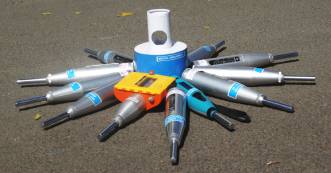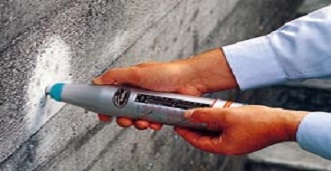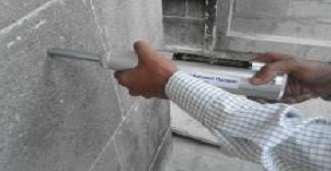Rebound Hammer Test
This is the most common method adopted for checking strength of concrete since 1940. The test is based on the principle that the rebound of an elastic mass depends on the hardness of the surface against which the mass strikes. The plunger of hammer is pressed strongly and steadily against the concrete surface at right angles to its surface, until the spring loaded mass is triggered from the locked position. The spring controlled mass rebounds and the extent of such rebound depends upon the surface hardness of concrete. The distance travelled by the mass as a percentage is defined as rebound number.
Procedure :
The test is sensitive to local variations in the concrete, for e.g. If plunger strikes the aggregate underneath, then it would indicate high rebound number, visa versa if it strikes a void / cement paste , then it will indicate low rebound number. For this reason it is desirable to take at least 12 readings per 300 Sqcm. ( as per BS 1881 : Part 202 (21)) and discard abnormally high / low readings from the average one. The impact / test points shall not be closer than 20 mm to each other.
Influence of Test Conditions
The test is influenced by following factors :
Type of Cement :-
Concrete made with high alumina cement can give strength 100 % higher or that with super sulphated cement can give 50 % lower strength than that with ordinary Portland cement. While Rebound readings on Blended cement concrete are lower by @ 5 to 10 %
Type of Aggregate :-
The influence of aggregate type and proportion can be considerable. Limestone coarse aggregate show rebound numbers approximately 7 points lower than those for concretes made with gravel aggregate.
Surface condition & Moisture content :-
Trowelled & floated surfaces are harder than moulded surfaces. Exposed aggregate surfaces are unsuitable for this method.
Readings on Dry concrete are more by @ 10 % and a wet surface will give rise to underestimation of strength of concrete by about 20 % lower than calibrated under dry condition.

/AVIVAET GATE VIEW.jpg)
/MANAGERS QUARTERS AVIVET.jpg)














